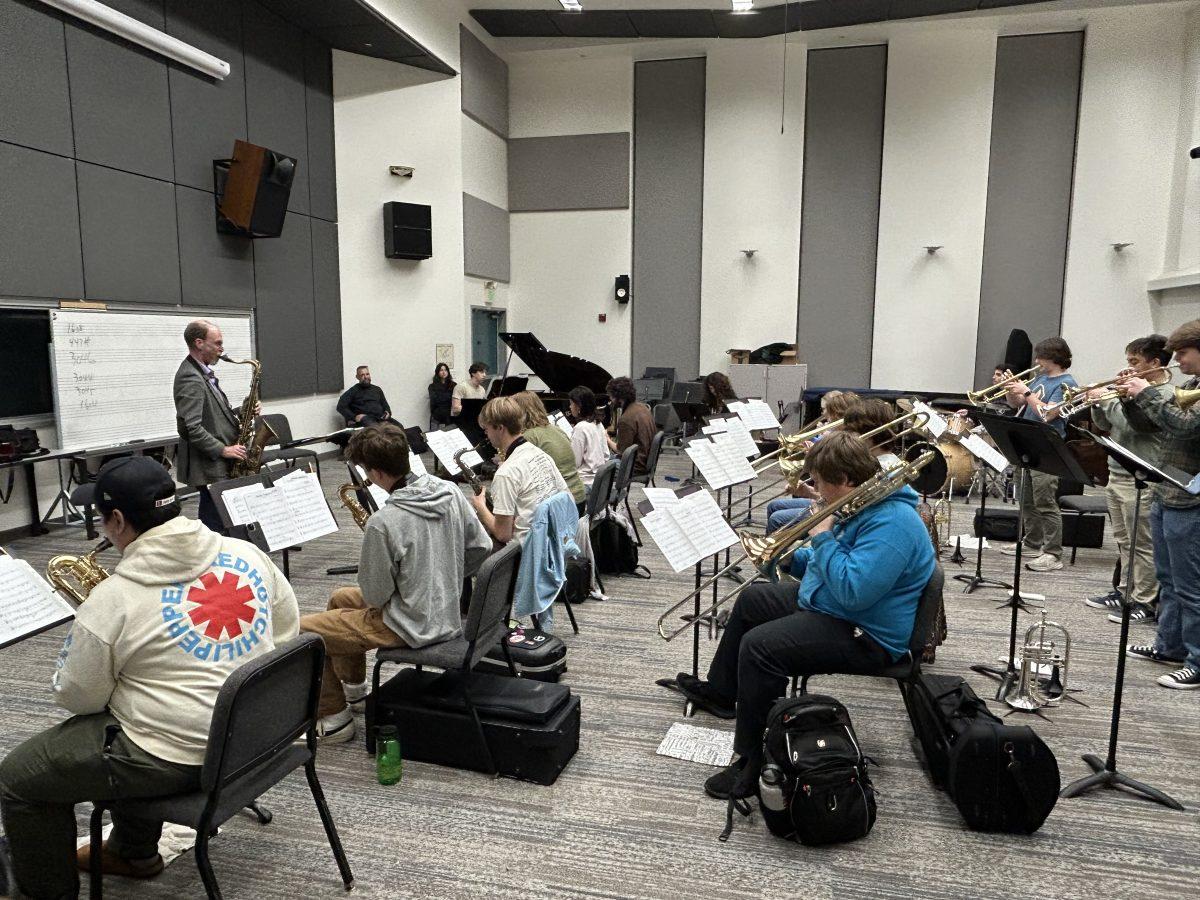The Flu and RSV (Respiratory Syncytial Virus) are making their way through SLO County this year quicker and more dangerous than years prior, according to Tara Kennon, San Luis Obispo County’s Health Agency Communications Coordinator.
“We continue to see higher than usual levels of RSV and influenza reported, for people of all ages,” Kennon said.
Health agencies also note an increase in Pediatric RSV.
Mathieu de Schutter, MD, chair of the Pediatrics Department at Sierra Vista Regional Medical Center, commented on an increase in the severity and quantity of RSV cases seen within the past couple of months.
“RSV has been severe,” de Schutter said. “It has required the maximization of staff for both nursing and respiratory therapists Nationwide, RSV is causing shortages of certain medications, including antibiotics that can be needed to treat complications from RSV, such as pneumonia and ear infections. It is unprecedented in the number of cases and in the early arrival of the initial surge.”

Photo by Yalina Harris
This year’s symptoms of both RSV and the flu mimic COVID symptoms making it harder to know the severity of each case right away. According to the Centers for Disease Control (CDC), symptoms include:
- Fever or feeling feverish/having chills
- Cough
- Shortness of breath or difficulty breathing
- Fatigue (tiredness)
- Sore throat
- Runny or stuffy nose
- Muscle pain or body aches
- Headache
- Vomiting
- Diarrhea (more frequent in children with flu, but can occur in any age with COVID-19)
- Change in or loss of taste or smell, although this is more frequent with COVID-19.
“SLO County hospitals are maintaining higher levels of admittance than usual for this time of year due to COVID-19, flu, and RSV,” Regarding the impact on hospitals, Kennon said, regarding the impact on hospitals. “While our local healthcare system is currently managing this increase and can provide care to patients who need it, we are staying attentive to the situation, especially as other CA counties are seeing drastic surges.”
Robert Benson, a local resident and nurse at Sierra Vista Regional Medical Center, said the increased number of flu, RSV, and COVID cases have taken a toll on hospital staff.
“We kind of got used to not quarantining and thought we were out of the woods so everybody just lowered their guard, but then, ‘Oh no! Three more people have the flu,’ Making us short-staffed even more,” Benson said. “We’re so short-staffed and everybody’s getting burned out and it’s like a mass exodus as far as healthcare workers go right now, but you have to do it.”
Local schools have also experienced a decrease in attendance due to sickness, said Ashley Aiello, district nurse and health coordinator with the Paso Robles Joint Unified School District.
“We have had a lower attendance rate recently because of illness but we typically don’t get documentation stating what illness the student had whether that’s the flu, RSV, or a common cold,” Aiello said in an email comment.
What are the statistics?

Flu season in the past two years has typically been at its highest between December through May. However, according to the weekly respiratory virus reports, from the California Department of Public Health (CDPH), this year has seen the highest outbreak of cases in October. This increase in seasonal flu and RSV is being seen nationwide and may be attributed to an after-quarantine trend.
According to the CDC weekly U.S. Influenza Surveillance Report, seasonal influenza activity is high and continues to increase across the country.
“The overall cumulative hospitalization rate was 16.6 per 100,000 population,” the CDC data states. “This cumulative hospitalization rate is higher than the cumulative in-season hospitalization rate observed in week 47 during previous seasons going back to 2010-2011, which ranged from 0.1 to 2.0 per 100,000 population.”
That’s an almost eight times greater rate than in previous years. In the CDPH weekly influenza report as of Oct. 2, 2022, there have been 36 deaths due to influenza-related complications, compared to the past two years which have only seen two at this time of year.
Why is this increase happening?
According to a French research paper published in The Lancet Infectious Diseases journal on Sep. 02, 2022, Marie-No’le Billard and Louis J Bont with the Department of Pediatrics, University Medical Center Utrecht, said the increase in viral infections can be attributed to a term they call, “Immunity debt.” Immunity debt “is caused by a lack of exposure to regular bacteria and viruses,” according to the research team.
The term has gained widespread popularity, with many doctors debating the accuracy of the claim in general. It states that the increase in viral infections, especially in children, is due to the lockdown precautions in effect during the COVID pandemic. Mathieu de Schutter, in an email comment, verified the validity of the term immunity debt.
“The RSV and influenza surges are indeed caused by the ‘immunity debt.’ This decrease in immunity to these and other common winter viruses not only affects the youngest children but also their young siblings if they were never exposed to the viruses during the pandemic restrictions,” de Schutter said. “In such cases, their mother’s immunity may have waned as well and she may not pass adequate antibodies, if any, through her breast milk.
“Another exacerbating factor is the recent Thanksgiving holiday, which caused cross-contamination between relatives from different areas resulting in people catching more than one virus during their get-togethers,” de Shutter added.
Nicole Johnson, director of Student Health Services at Cuesta Community College, commented on how Cuesta was affected this flu season.
“My best professional judgment would be that it looks very much on this campus like it does in the community,” Johnson said. “There’s no reason we wouldn’t look like the community and other school settings in our county. When you’re doing testing at really small numbers, it’s harder to translate it to data, in order to pinpoint an exact cause.”
Another factor that can be attributed to the Central Coast’s increased cases can also be due to a lack of vaccinations. Public opinion has changed and the distrust of vaccines has negative effects when trying to combat Flu, RSV, and COVID.
The SLO Public Health Agency offers free COVID and flu vaccines with a $10 office fee; the clinic is located at 2191 Johnson Ave. San Luis Obispo, CA 93401. Another resource to receive a preventative vaccine is at any local Walgreens, they offer free vaccines for COVID and the flu with insurance or government assistance.
How to decrease the spread and be more mindful?
The San Luis Obispo public health agency has many resources to help understand the dangers and safety measures to take to avoid the further spread of all viral diseases. Kennon said that “tips to help protect yourself and the community from respiratory viruses include:
- Washing your hands thoroughly and often. Avoid touching your face.
- Cleaning and disinfecting frequently-touched surfaces such as doorknobs, light switches, and phones.
- Wearing a mask (N95 or KN95) for added protection in crowds, especially indoors. If you have any symptoms and need to be around others, wear a mask to avoid spreading the virus.
- Staying home from work, school, or childcare if you are sick, even if you test negative for COVID-19.
- Staying up-to-date on flu and COVID-19 vaccines to prevent complications of co-infection.
“We also just announced the addition of flu testing at our COVID-19 community testing sites,” Kennon said. “These flu tests are free and give doctors a view of how to approach symptoms.”
According to SLO Public Health, patients who test positive for COVID-19 may access Test-to-Treat services at the community site and take home a course of Paxlovid antiviral medication if indicated. Patients that test positive for the flu can see a primary physician and gain emergency help if needed.
The testing centers are located in:
- Grover Beach (1336 Ramona Avenue, Suite A)
- Paso Robles Train Station (800 Pine Street)
- San Luis Obispo (Veterans Hall 801 Grand Avenue.)
De Schutter urges the best way to combat the spread is to be very mindful of the people around you who are most vulnerable to complications from these viruses: the young, under 4 years old, the elderly, and those with chronic medical issues. You should apply all the risk-mitigating lessons you learned during the COVID-19 pandemic. Importantly, also get the flu shot.
Nicole Johnson shares similar views,.
“Cuesta is practicing very similar measures, with optional masking and things like that,” Johnson said. “It looks very similar to other schools and the county. It really is important that when you start to become sick, that’s generally when you’re most contagious. Practicing social distancing, and staying home is really important and that gets challenging.
“We get to a place where we have important deadlines coming up. Maybe we’re reviewing for finals, and we don’t want to miss that material,” Johnson continued. “Often, the intention is obviously not to do harm, it’s that these deadlines and things are pressing and we try to carry on. In the long run, it exacerbates the condition for everyone.”














